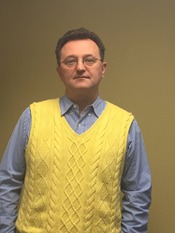Program Information
Cancer Stem Cell Hypothesis and Radiation Treatments
E Fourkal1*, (1) Pinnacle Health Cancer Center, Harrisburg, PA
Presentations
SU-F-T-683 (Sunday, July 31, 2016) 3:00 PM - 6:00 PM Room: Exhibit Hall
Purpose:
The tumor control probability in radiation therapy allows comparing different radiation treatments to each other by means of calculating the probability that a prescribed dose of radiation eradicates or controls the tumor. In the conventional approach, all cancer cells can divide unlimited number of times and the tumor control often means eradicating every malignant cell by the radiation. In recent years however, there is a mounting consensus that in a given tumor volume there is a sub-population of cells, known as cancer stem cells (CSCs) that are responsible for tumor initiation and growth. Other or progenitor cancer cells can only divide limited number of times. This entails that only cancer stem cells may nned to be eliminated in order to control the tumor. Thus one may define TCP as the probability of eliminating CSCs for the given dose of radiation.
Methods:
Using stochastic methods, specifically the birth-and-death Markov processes, an infinite system of equations is set for probabilities of having m cancer stem cells at time t after the start of radiation. The TCP is calculated as the probability of no cancer stem cells surviving the radiation. Two scenarios are studied. In the first situation, the TCP is calculated for a unidirectional case when CSC gives birth to another CSC or a progenitor cell. In the second scenario, a bidirectional model is studied where the progenitor cell gives rise to CSC.
Results:
The proposed calculations show that the calculated TCP for CSC depends on whether one adopts unidirectional or bidirectional conversion models. The bidirectional model shows significantly lower TCP values for the given dose delivered to the tumor.
Conclusion:
Incorporating CSC hypothesis into the TCP modeling may notably influence the dose prescription as well as the concept of the expected TCP after the radiation treatments.
Contact Email:

